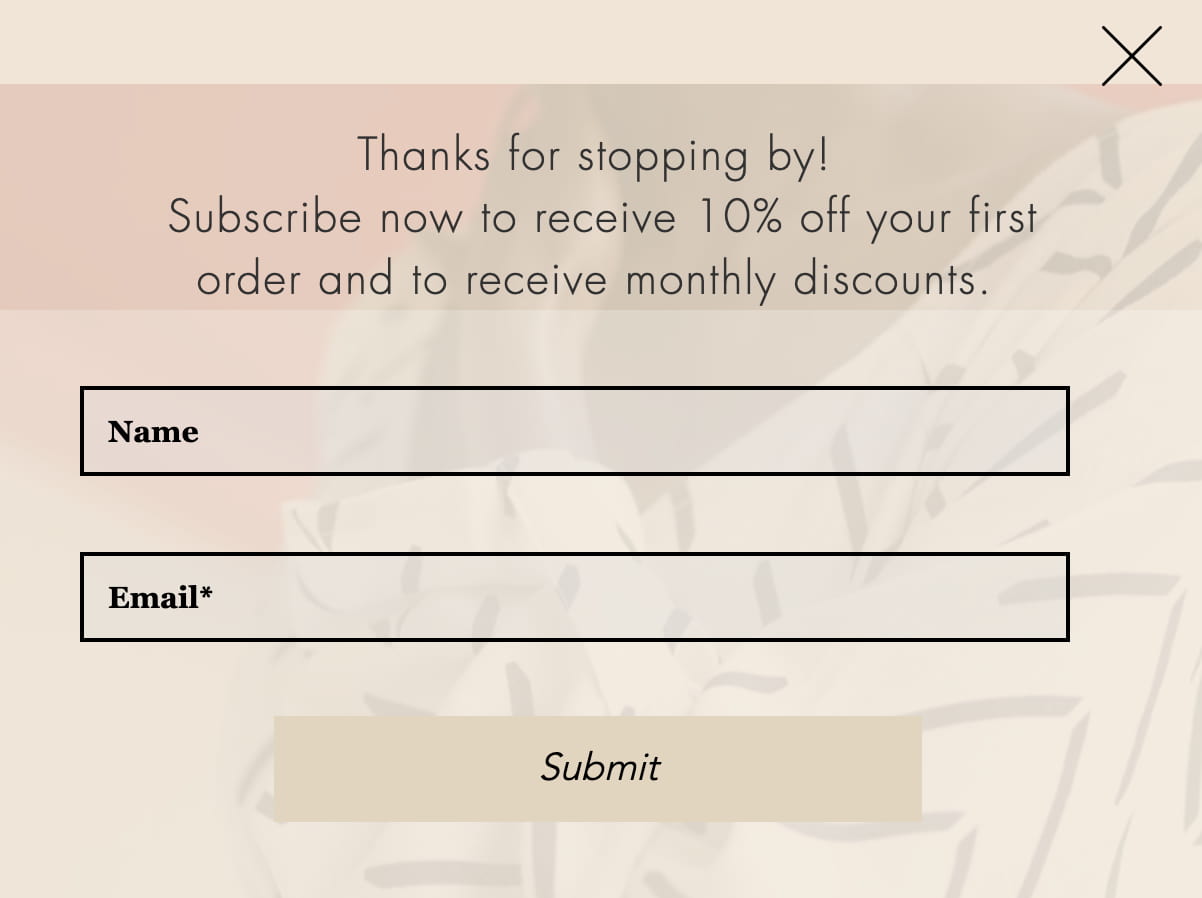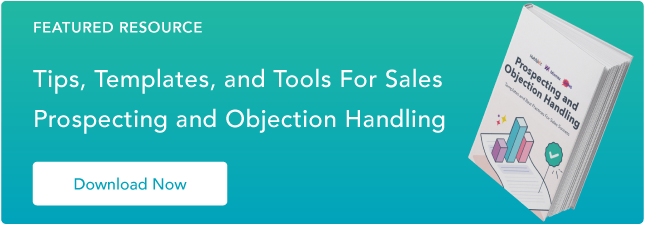There’s one email feature that can prevent your email from going straight to your recipient’s “Junk” folder. That tool is an email subject line, and it’s one of the most important parts of your sales email.
Your open rate, click rate, and CTA conversions depend on your sales email subject line. Sure sounds like a lot of responsibility for 60 characters, doesn’t it? Don’t fret. Once you understand what makes a great subject line, you’ll crank them out effortlessly and see your open rates soar.
But first, what makes a good subject line?
With sales email subject lines, a little creativity goes a long way.
After all, sparking your prospect's curiosity is often the simplest and most effective way to get them to open your email — and once they've done that, you can win a response by writing a relevant, timely email.
But hitting on a good subject line isn't easy. Plus, what was fresh and inventive eight months ago will make your buyer's eyes roll back in their head today. So I talked to a few salespeople to learn the subject lines they were having success with.
Use the following tips knowing that they've been tried, tested, and verified to work by reps around the world.
1. Keep it brief.
The ideal length of an email subject line varies between mobile, desktop, and tablet devices, so keep this in mind as you craft the perfect one-liner for your sales email. On average, the maximum subject line is about 60 characters long before it gets cut off by the email provider. Campaign Monitor recommends a subject line of 41 characters so that each word appears on desktop, mobile, and tablet devices.
2. Personalize it.
Personalizing the subject line to include the prospect’s name is always a smart way to go. In fact, Campaign Monitor found that 74% of marketers claim to enjoy an average 20% increase in revenue when personalizing emails. People want to hear from, talk to, and buy from other people, not from big brands and companies.
Rather than sending your sales emails from a generic address like sales@imtryingtosellyousomething.com, use your personal email address or an alias that includes your first name to give your message a more human appearance.
3. Make it interesting.
I know. We’ve all been taught not to judge a book by its cover, but sales email subject lines don’t count. (Sorry, mom.) If you followed our tips on creating the best cold sales email, we don’t doubt that the content of your emails will have your prospects doing backflips to book calls with you. But before they get to the masterpiece of an email, they’ve got to make it through the subject line first.
Making the subject line interesting could mean a number of things, so use this list to find an angle that you think your prospect might care about.
- A recent news story in their industry
- A new statistic about their industry
- A question about a project they just started or finished
- An ask for their help
The key to each of these angles is this: they’re all about the prospect. You’ll have plenty of time to pitch your product in the body of the email and on future calls. The primary goal of your subject line is to get the prospect to click, read more, and decide if they’re interested enough to respond or take action.
4. Offer value.
Does your company offer a product or service that the prospect has been looking for on social media? Do you have a promotion that could free up your prospect’s budget for other activities? Can you help the prospect reach their goals faster? All of these options offer value to the prospective customer and are enticing angles to include in your subject line.
5. Create urgency.
Time sensitivity is a common filter that many of us use to prioritize our inboxes, so it’s understandable that our prospects operate their inboxes the same way. Even if your prospect isn’t particularly interested in making a purchase right now, there’s still some benefit in knowing that they could miss out if they don’t at least see what the limited-time-only promotion is. Creating urgency, where appropriate, is a tried-and-true tactic to get your emails opened and read, but don’t rely on this all the time. You could risk annoying your prospect with constant urgent requests.
6. Avoid clickbait.
Along the same lines of annoying your prospect, avoid creating email subject lines that can’t live up to the actual email, product, or service itself. Insinuating urgency, value, or importance where there isn’t any can leave a bad taste in your prospect’s mouth at best, and lead to your domain being marked as spam at worst. For an added layer of assurance, cross-check your subject line against our ultimate list of spam trigger words to avoid.
7. Include keywords.
Keywords are another way prospects filter and organize their inboxes. Including specific keywords in your email can help yours make it into a folder the prospect will review later. There’s no magic way to know what filters and rules your prospects have set up, but with some creative thinking and A/B testing, you can deduce what words affect your open rates better than others.
The Best Sales Email Subject Lines
Read through them all or use the index below to jump to the subject lines you need now.
- Cold Email Subject Lines
- Follow-Up Email Subject Lines
- Best Email Subject Lines After No Response
- Email Subject Line Examples for Meeting Requests
Imagine opening your mail app and seeing only the name, time, and date an email landed in your inbox. How would you prioritize what to open first?
It wouldn’t be easy, that’s for sure. Your prospects are constantly prioritizing their email inbox, even setting up filters and rules to organize their messages in order to respond to important and urgent notes as efficiently as they can.
You might be thinking that your cold sales email won’t make the prospect’s priority email list. With the following cold email subject lines, however, you can pique just the right amount of curiosity and get that prospect to open up your email.
1. "Question about [goal]"
What's your question? They'll have to open your email to find out.
2. "[Mutual connection] recommended I get in touch"
Few things are more powerful than referrals. If you share an acquaintance with your prospect, be sure to put that person's name in your email subject line. The more your prospect trusts your referrer, the more compelling your email will be.
Smart reps know that referrals are as good as gold in sales. According to NoMoreColdCalling.com, referred prospects have a whopping 50% close rate. If you've been introduced to a prospect by someone they trust, make it clear in the subject line that it's a referral.
3. "Hi [name], [question]?"
Questions provoke answers. Emails with question subject lines provoke opens and replies. Incorporating their name makes the email more personal, which will help it stand out in their inbox.
According to sales trainer Jeff Hoffman, approaching prospects like a curious student instead of a knowledgeable expert boosts engagement. Posing a question in your subject line asking for the prospect's help paves the way for a conversation — the point of a prospecting email.
4. "Did you get what you were looking for?"
Use this one to follow up with an inbound lead or a website visitor. They're clearly looking for help with a challenge — ask how you can be of service.
5. [the e.e. cummings subject line]
Most people incorporate capitalization when they draft emails (although some go a little CrAzY). With this in mind, an all-lowercase subject line will stand out.
6. "Hoping to help"
Have you heard? The age of Always Be Closing is dead; the best salespeople today adhere to ABH (Always Be Helping). Put this sentiment front and center — prospects will appreciate your candor as well as your willingness to be of service.
7. "A [benefit] for [prospect's company]"
Here are some examples of what this might look like in practice:
- A new HR strategy for Business Inc.
- A savings of $25k for ABC Corp.
- An all-time revenue record for Organization Y
The specificity of the benefit and the personalized subject line will hook your buyer. Plus, just like the prospect's own name, buyers are also partial to the name of their company. When in doubt, personalize.
8. "X tips/ideas for [pain point]"
People love numbered lists (hence, the rise of the listicle). Insert a number into your subject line to drive interest.
9. "Idea for [topic the prospect cares about]"
A free idea? Sure, I'll take it. *click*
10. "10x [prospect's company]'s traction in 10 minutes"
Throwing out some buzzy numbers can generate some immediate interest.
11. "I found you through [referral name]"
Again, don't underestimate the power of mentioning referrals in a subject line. It immediately establishes a connection with the prospect and increases their investment in responding to you.
12. "We have [insert fact] in common ..."
Spend five minutes looking through your contact's LinkedIn or Facebook accounts. I bet you can find at least one thing you have in common — even if it's just that you've both been photographed eating spaghetti. Be careful; don’t mention something too personal or something they clearly want to keep private, or it will come off as creepy. Pick something that the prospect made publicly known on their social profiles.
13. "So nice to meet you, [Prospect]!"
Whether they downloaded a piece of content or visited your pricing page, let your prospect know you've noticed their interest and are happy to finally touch base.
14. "Feeling [insert emotion]? Let me help"
Tap into current events in your prospect's industry. Targeting marketers during the busy weeks before Black Friday? Try "Feeling stressed? Let me help." Then share how your product or service can lighten their load.
15. "Hoping you can help."
People generally want to help other people. If you're reaching out to someone for the first time, ask, "I'd like to learn more about your marketing conference schedule this year. Would you be able to connect me with the right person to speak with?"
16. “This is a sales email”
You’d be surprised how far honesty and transparency will take you. By opening with the primary reason for your email, you’ll break down the wall your prospect has up when they’re being sold something. By taking the elephant out of the room, you can use the body of your email to get your point across.
17. "Your yearly [X] target"
Everyone is held to a number, whether they're a writer and editor like me (blog traffic!) or a CIO (achieving SLAs!). So pair "your" with any goal or problem the prospect might be experiencing, and you've got a hyper-relevant email subject line.
18. "[Situation] at [Company]"
For example, "Sales Training at Business Inc." or "HR Services at Organization Y." Whatever it is that you sell, connect it with the company you're prospecting into for a subject line one-two punch.
19. "Who is in charge of X at [company]?"
Seeking an introduction to the right contact at the buyer's organization? There's nothing like getting right to your point in the subject line of the message.
20. "Have you tried [restaurant in prospect's town]?"
The salesperson who suggested this said it has an insanely high open rate. And I'm not surprised; if I got an email asking whether I'd visited Waypoint — one of the best seafood places in Cambridge, in my opinion — I'd click so fast I'd break the sound barrier.
To use this line, do a little digging to discover A) where the prospect's company is located and B) one of the top-rated restaurants in that area. And you don't have to pretend you've gone there. Inside the email, say something like, "If I ever visit [location], should I go? Does it deserve the hype?"
With this line, you'll start a rapport-building conversation, show you did your homework, and make the prospect feel like a local expert in one fell swoop.
21. "So, you speak sign language?"
That's an example of a tidbit you can easily learn from someone's bio, personal website, LinkedIn profile, or Twitter account. Personalizing your email subject line — even if it has nothing to do with the purpose of your outreach — will earn you lots of opens.
According to Ali Powell, a former principal account executive at HubSpot, the secret to writing a phenomenal sales email subject line is to make it something about them. Mention something that couldn't apply to anyone else.
22. "Will cut to the chase"
This subject line manages to be both intriguing and matter-of-fact at the same time. Your reader instantly thinks, "Cut to the chase about what?"
According to curiosity-drive theory, people find uncertainty unsettling. Conversely, clearing up areas of uncertainty is mentally satisfying. According to the salesperson who uses this one, it's a big winner.
23. "Might be off-base here, but ..."
What could it be? The prospect will have to open your email to find out.
Similar to "Will cut to the chase," this subject line plays on the buyer's curiosity. If they don't click, they'll never learn what you're potentially wrong about.
24. "If you're struggling with [common pain point], you're not alone"
As a salesperson, you have a bird's eye view of your prospect's industry. They only know their own organization. That means what might feel like a unique problem to them may actually be an incredibly wide-spread challenge. You can use your broader perspective in three ways:
- Grab their attention with this subject line
- Demonstrate your credibility
- Reassure them you may have some answers
Also, who likes to be alone? Thanks to the bandwagon effect, the mere fact that other people have done or are doing something is often enough to sway opinions and drive action.
25. "Can I make your life 20% easier?"
This eye-catching subject line is a good option if your solution makes your customers more efficient, accurate, or productive. Combined with a personalized email, this opener helps you immediately focus on value.
26. "[Name], saw you're focused on [goal]"
Pack a one-two punch with this subject line. Not only are you using your recipient's name, but you're referring to an opportunity or objective that's on their mind right now.
(Wondering how to identify that opportunity or objective in the first place? It helps if your marketing automation software tells you which webpages on your site they've visited or content they've downloaded. For example, if they just read three blog posts about Google Ads, it's safe to say they care about getting started with or improving their paid advertising results.)
Not only has research shown that people respond positively to hearing their names, the phenomenon of implicit egotism holds that our name-based preferences extend to the cities we choose to live in and what occupations we pursue.
27. "Will I see you at [event]?"
If you know your prospect will be at the same event as you — either from the attendance list or social media — go with this friendly question.
Even if your prospect doesn't respond to your email, your name and the event will be linked in their mind. That means they're likelier to wander over to your booth and check out your demo while exploring the floor. And if they do respond? You can schedule a conversation. Boom.
28. "Can I help?"
The age of Always Be Closing is dead — to be successful, salespeople must practice Always Be Helping. Use this subject line to tell the buyer you're eager to add value.
Plus, as soon as your prospect sees this in her inbox, they’ll wonder, "Help with what?" There's only one way to find out ... Reading your email.
29. "Tired of salespeople who never give up?"
The rep who passed along this subject line said that in the body of her email, she writes:
Yep, me too. That's why I promise I won't keep contacting you if you're not interested. :)
Just let me know if you're [seeing, dealing with] any of these three things, which my customers in X [industry, role] often are:
- Issue #1
- Issue #2
- Issue #3
This subject line works because honesty is appealing — from the outset of your relationship, you're showing your prospect you're a straight-shooter. This approach also lets you empathize with them (let's face it, we are all tired of overly aggressive salespeople). It's unique and memorable.
30. "[Name] suggested I reach out"
Referral sales expert Bill Cates notes that salespeople who get referred to new prospects "borrow trust" from the referral source.
This means that instead of coming in cold, the relationship between the rep and the prospect automatically becomes warmer thanks to the relationship between the referred prospect and the referral source. This subject line effectively uses that connection to your advantage.
31. "Contacting you at [Referral]'s suggestion"
This is a slightly more formal version of other referral subject lines on this list. Use it if you're emailing someone in a less casual industry; for example, I'd suggest this subject line for a finance professional or higher-ranking employee.
All the salespeople who recommended this subject line passed on the same warning — if you didn't get a referral, don't use this line! It's not worth the risk of your prospect asking your fake referrer, "Hey, did you tell so-and-so they should talk to me?" If that happens, you'll look bad to everyone involved.
32. "[Referral name]"
This is another one from Ali Powell's arsenal. "Just put the full name of the person in the subject line and nothing else. I promise this works!" she writes. For example: "Jane Smith" or "John Doe."
The simple "referral name" subject line draws on the power of referrals without providing details. But there's another reason it works — in a sea of emails labeled with verbs and adjectives, a person's name (and one the recipient knows well) stands out.
33. "[Referral name] loves us & thought you might, too"
Follow up with your happiest customers and use this subject line to set the tone for your communication. As an extra bonus, include a personalized testimony from the referrer in the email or have them introduce you via email.
A referral with no context is just a referral, but one that leads with how happy the referrer is stands out — especially if you can snag an email introduction from your referrer.
34. "Fellow [University] grad here!"
This is less of a referral and more of a referring connection. Draw upon a similar hometown, state, or alma mater for instant rapport building.
This subject line works because people love to feel connected to one another. Calling upon a similarity with your prospect forges an instant bond and can lead to easier rapport and a few extra minutes of their attention.
1. "Our next steps"
Use this subject line to follow up after a first connection or to re-engage a prospect gone quiet.
2. "X options to get started"
Pop in a few bullet points about how to kick off your relationship in the body text (a content offer, a phone call, an upgrade opportunity for current customers, etc.), and you're good to go.
3. "You are not alone."
This subject line hits home on two fronts:
- It's intriguing.
- It's human.
If you know the prospect is struggling with a difficult challenge, share stories of how others overcame a similar hurdle.
4. "10 mins — [date]?"
Short, easy, and to the point. If you can mirror this sentiment in the body of your sales emails, the replies will be flying your way.
5. "A 3-step plan for your busy week"
You know the pain points of your ideal customer, so bullet those pain points in the email body and provide short, actionable tips on how they can overcome those challenges over the coming week.
6. "[Prospect], I thought you might like these blogs"
Include their name in the subject line, and fill the email body with content you know they need. This is a great way to test disengaged or completely unresponsive prospects for signs of life.
7. "Here's that info I promised you"

Always end your call or previous prospect communication with several next steps and follow-up topics. This gives each side direction — and also gives you a reason to follow up.
8. "I'd love your feedback on that meeting"
If you just gave a demo or led a meeting with a prospect's colleagues, it's a good idea to stay top of mind and immediately ask if you can answer any questions. This also helps gauge how things went and understand what the next steps should be.
9. “I had this idea since we last spoke”
This subject line does two things:
- Encourages them to recall your conversation
- Sparks interest in what your idea might be
This interest may earn you an email open.
10. “I thought about what you said”
This subject line functions similar to the previous one but with an added edge: They may now be curious if you’ve addressed a concern or objective, giving them more leverage. If they believe they now have an advantage, they may be more willing to hear you out.
11. “Don’t tell my boss”
Leverage a little scandal to pique their interest and make them feel that your message is a secret just for them.
12. “What would it take?”
A rhetorical question that trails off (What would it take to what, exactly?) can open a dialogue and perhaps even compel them to reply.
13. “Here’s what I’ll do”

Some peoples’ love language is “Acts of Service,” so engage the law of reciprocity by offering something in hopes of winning their favor. The mystery of what you’re offering and the promise of getting something will prompt them to open the email.
14. "Talk on [day] at [1:45]?"
The person who came up with this subject line gave me a bonus tip: "Asking for an appointment on the :45 feels less demanding than one that begins on the hour or half hour — because it suggests you're only going to need 15 minutes of the prospect's time."
15. “[Prospect], I loved your post on [website/publication name]”
Who doesn’t like compliments? Do a bit of research on your prospect. If they’ve written an article or shared an insight on LinkedIn you found interesting, let them know. It gives you a good opener for contacting them and also demonstrates that you appreciate their expertise.
16. “Hi [Prospect], we met at [event]”
This prompt is great for connecting post networking event. It’s to the point, but most importantly, reminds the recipient who you are and why you’re contacting them.
17. “Still undecided? This might help”
Have you already reached out about your product or service and haven’t heard back yet? Use this subject line to help persuade your prospect to purchase. Go back to the prospect’s pain points and think about how your product fixes them. Did you roll out a new feature or are you now offering a discout for them to try? Once you have your new angle, include it in your email message to persuade them to convert.
18. “Try [product/service] for free”
Sometimes you need to gain someone’s trust before they’ll try your product. One way to do that is removing the risk of them trying your prodect. Leading wiith a free trial offer in the subject line gives the recipient a reason to open your note because it explicity states the benefit to them.
1. "Do not open this email"

If you've ever spent time with a toddler, you know that telling someone not to do something tends to prompt that very behavior. This concept also works on adults. Reverse psychology for the win!
2. "Should I stay or should I go?"
If you haven't heard from a prospect in a while, pull out this subject line and pair it with a cleverly crafted breakup email.
3. "Know this about [topic of interest]?"
Offering a helpful tip or statistic about a subject the prospect is interested in establishes your credibility and gets the conversation flowing.
4. "Where is the love?"
If your prospect has fallen off the face of the earth, use this subject line to poke fun at the situation and put a smile on their face.
5. "Permission to close your file?"
This breakup email subject line puts the onus on the prospect to move forward. Whether or not they respond, you'll know where they stand.
6. "Feeling blue? Like baby pandas?"
Come on. Who doesn't like baby pandas? This subject line will get your prospect to open your message — where they'll find an adorable video of pandas playing or a GIF of a sneezing baby panda (pick your poison).
7. "If you change your mind about partnering with [your company]"
Break up radio silence by putting the ball squarely back in a quiet prospect's court.
8. "'I love everything in this email!'"
Use this quote in your subject line and people will have trouble not opening it. In the body of the email, poke fun at its overstatement with a line like, "OK, so my boss said that, but..."
9. "3 weekend ideas for you"
Trying to reengage a high-value prospect? Research a few things to do in their city this weekend and hit send.
10. "Am I assuming correctly?"
If a prospect just isn't responding to your emails, send them a quick note saying, "Usually when I don't hear back, it means this isn't a priority for your company at the moment. Am I correct in assuming this?"
11. "HBO Go password?"
If a prospect simply isn't responsive to traditional outreach, shake things up with a funny email subject line. You might just earn a second look.
12. “Wait, are you ghosting me?”
I received this bold and hilarious subject line from a sales rep earlier this year and it is one of my favorites. It may not work in every industry, but it certainly got my attention, made me open the email, and gave me a chuckle.
13. “Reaching out once more (LMK either way)”
This is a good option to use for your last attempt to connect with a prospect. While they still may decline your services, it encourages them to respond regardless.
1. "15 minutes this week?"
We've all got an extra 15 minutes, right? If you're simply trying to connect with a prospect for the first time or restart a stalled relationship, this low-commitment subject line can be an easy way for your prospect to re-engage.
2. "Requesting a meeting on [Day]"
Use this subject line when your prospect is expecting a meeting request from you. It's best for follow-up correspondence when you've already worked out the details offline.
3. "Time for a quick touch base?"

This is another low-pressure way to engage new prospects or reconnect with stalled ones. You should have had some interaction with them so that your request doesn't come completely out of left field or as if you're trying to trick them into meeting with you.
4. "Meeting invite: [Date]"
This subject line leaves out the purpose or content of the meeting to encourage your prospect to open your email for the details.
5. "[Company name] + [Company name]: [Date]"
If you are sending a formal meeting request to a prospect, use this subject line. It's respectful, concise, and purposeful. It works well when setting up meetings with C-suite or enterprise clients.
More Email Subject Lines That Get Opened
Thirsty for more? We’ve curated 70+ more email subject lines you can quickly read through and repurpose for your sales efforts.
Psst — looking for both marketing and sales subject lines? Download 100 more email subject lines that our team loved from both marketers and salespeople.
Featured Resource: 100 Marketing & Sales Email Subject Lines
 Download 100 free email subject lines to get inspiration for your next email.
Download 100 free email subject lines to get inspiration for your next email.
Catchy Email Subject Lines for Sales
Chances are, your prospect is scanning their inbox as quickly as possible. With these catchy email subject lines, you might be able to re-engage their attention even if they scrolled past your email. Give them some food for thought with the following examples.
- Hey [name], have you heard about this?
- Unlock [benefit] for [prospect's company]
- X secrets to conquer [pain point]
- Spark an idea for [topic the prospect cares about]
- 10 minutes to revolutionize [prospect's company]'s growth
- [Referral name] led me to you
- Achieve your yearly X target with us
- May seem off-base, but hear us out…
- Will we see you at [event]?
- X proven strategies to crush your competition
- Join the ranks of satisfied customers who love us
- Exciting new strategies for [company name]'s [department]
- Big companies deserve the benefits of [your service/product]
- Could you use one of these?
- X ways our software can transform your life
- A foolproof plan for your busy week
- Delivering on my promise — here's the info you need
- Since we last spoke, I had this brilliant idea
- Try [product/service] for free — no strings attached
- The secret weapon you've been waiting for
Professional Email Subject Lines
Sometimes, a simple, professional email subject line is what you need. Don’t rock the boat too much with the below examples, which you can use for inspiration as you draft your sales emails. Hint: You can even use these internally with your team.
- Request for your expert opinion, [Name]
- Let's discuss your strategic goals
- Follow-up on our recent conversation
- [Your Company] Updates and Insights
- Invitation to our exclusive event/webinar
- How can we assist you further, [Name]?
- Seeking your input on [specific topic]
- Introducing our latest offering
- Insights and trends in [industry]
- Your success is our priority
- Let's align our [gaols/strategies/efforts] for growth
- Important update regarding our partnership
- Best practices for [specific goal]
- Action required: Response needed by [date]
- Join our webinar for insider insights
- Your opinion matters — quick survey inside
- Exclusive deal just for you
- Transform your X strategy with these tips
- Connect with industry experts
- Ready to tackle your X challenges?
Email Subject lines for Reaching Out
Reaching out to a prospect for the first time can feel daunting — especially if the process isn’t automated with sales software. The below subject lines will do the trick when you need to reach out to prospects for the very first time.
Keep in mind that some of these should be sent when and if a prospect has shown some interest in your company or product. Some subject lines, however, could be used for ice cold emails.
- [prospect's company] x [your company]
- Let's connect and discuss X goal
- Impressed by your [achievement/project]
- Reaching out to explore a potential collaboration
- Your industry expertise caught my attention
- Can we help you overcome [specific challenge]?
- Try [product/service] for free — no strings attached
- Quick question for you, [name]
- Reaching out to discuss a potential partnership
- Ready to supercharge your [task your prospect cares about]?
- Unlock the secrets to successful [specific goal]
- Introducing our newest feature [prospect's company] will love
- Curious about your thoughts on [specific idea]
- One solution for [prospect’s challenge]
- Discover new opportunities for growth with [your company]
- Introducing our AI-powered solution for [prospect's challenge]
- Here to help, [Name]
- Get started on improving [prospect’s challenge]
- Your [achievement/project] speaks volumes — let's chat
- [Mutual connection] wants you to check this out
Attention Grabbing Subject Lines for Sales Emails
Grabbing your prospect’s attention is an art. You’ll need to create a sense of urgency, speak to a specific pain point, or tantalize them with a favorable outcome. The subject lines below are a good fit for SaaS salespeople or any salesperson who needs a prospect to finally bite.
- Don't let your [product] trial expire
- Wondering if you got my last mail
- Want some more time? It’s on us
- Now it’s personal — [product’s] biggest leap yet
- Your new competitive advantage
- [Task your prospect cares about] smarter, not harder
- The future of [prospect's industry] starts here
- Conquer [specific challenge]
- Discover the power of [your product/service]
- How we can triple your ROI in just 30 days
- Say goodbye to [pain point]
- The future of [task or industry] is here — are you ready?
- Don't let outdated X tactics hold you back
- The ultimate X playbook for unprecedented results
- Discover the power to achieve X
- Say goodbye to average and hello to exceptional
- Supercharge your [task your prospect cares about] with [product/service]
- Helping [prospect’s company type, i.e. startups/enterprises] with [common issue] — could your company benefit?
- A foolproof plan for your busy week
- Still unsure? Let's see if this can help
Your Guide to Writing the Best Sales Email Subject Lines
Even though email subject lines are short, they carry a lot of weight when it comes to the success of your sales emails. The best email subject lines are creative, compelling, and informative without giving too much away. A good subject line that piques interest is the difference between a prospect opening or ignoring an email. To see the most success in your email subject line, be flexible, always test, and get creative for the best results.
Editor's note: This post was originally published in April 2020 and has been updated for comprehensiveness.
This article was written by a human, but our team uses AI in our editorial process. Check out our full disclosure to learn more about how we use AI.

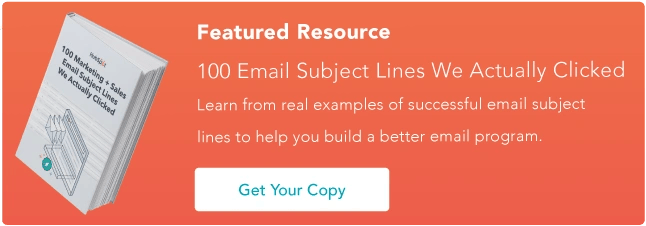
 As seen in the chart from the TCS Study, some of those actionable insights that provide the most value include being able to 1) identify customers that have the most value or potential value, 2) identify cross-selling opportunities, and 3) determine optimal sales approaches.
As seen in the chart from the TCS Study, some of those actionable insights that provide the most value include being able to 1) identify customers that have the most value or potential value, 2) identify cross-selling opportunities, and 3) determine optimal sales approaches.
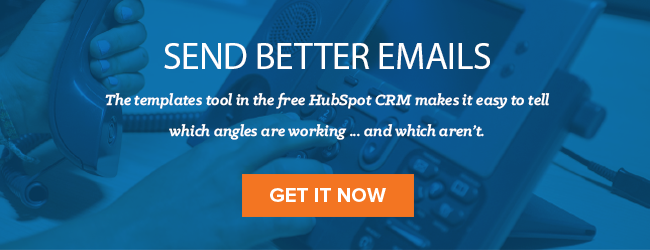

 Former Microsoft CEO Steve Ballmer always wanted to own a sports team. Ultimately, he bought the LA Clippers for $2 billion, out-bidding numerous other groups that wanted the NBA team, including Oprah and Oracle's Larry Ellison.
Former Microsoft CEO Steve Ballmer always wanted to own a sports team. Ultimately, he bought the LA Clippers for $2 billion, out-bidding numerous other groups that wanted the NBA team, including Oprah and Oracle's Larry Ellison.

















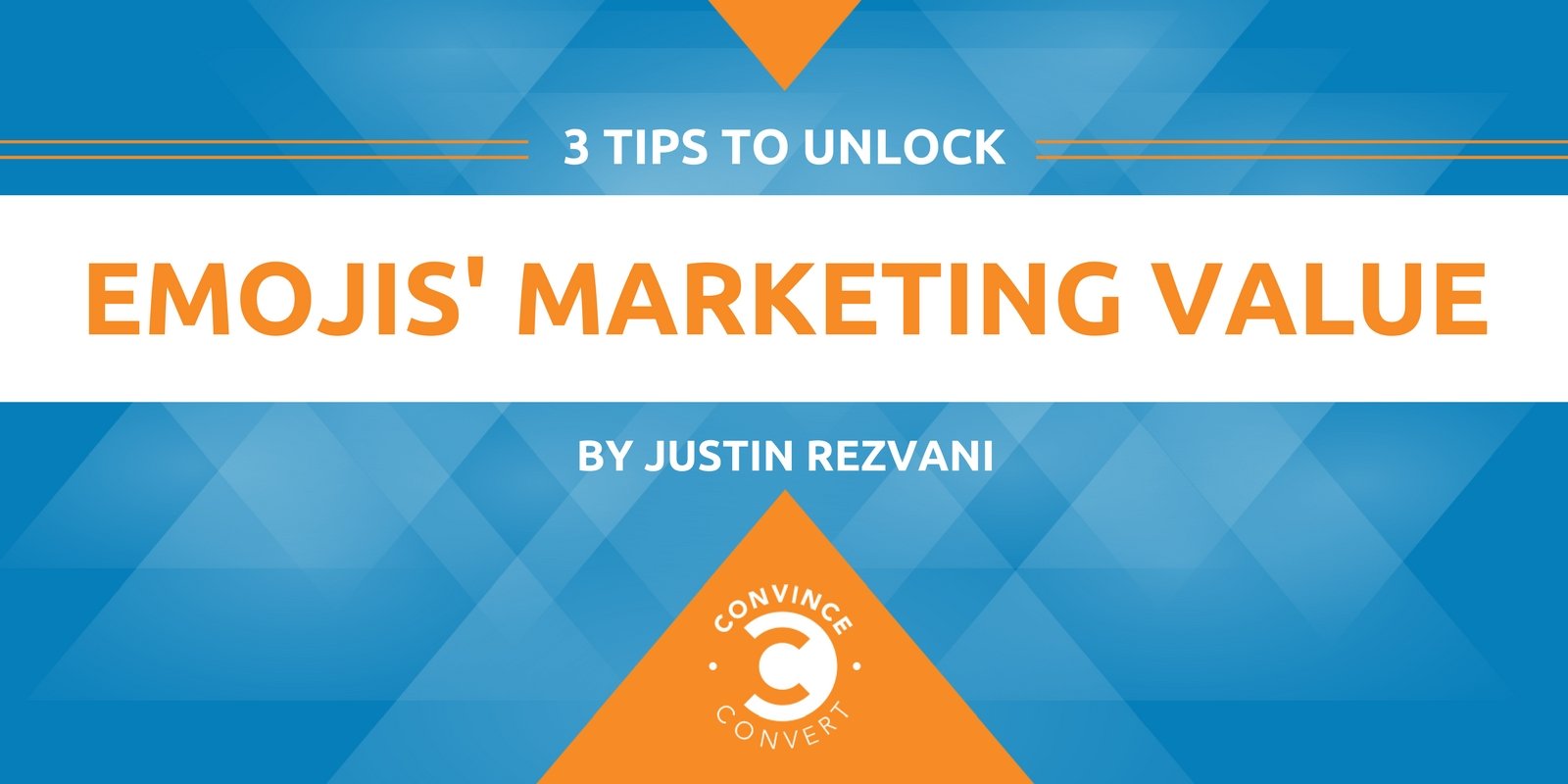



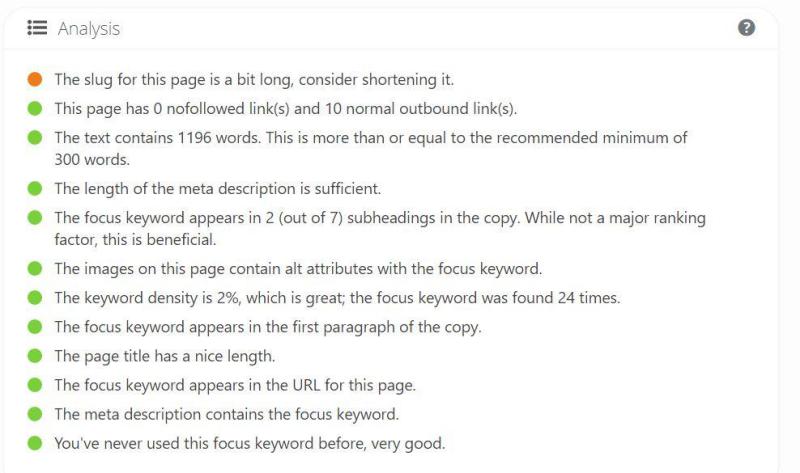

 About the Author
About the Author

 UK-based design firm
UK-based design firm  Sending a targeted email showcasing your new products is a great way to reengage customers. I hadn’t shopped with them in a few months, but I definitely browsed their shop after receiving the email.
Sending a targeted email showcasing your new products is a great way to reengage customers. I hadn’t shopped with them in a few months, but I definitely browsed their shop after receiving the email.